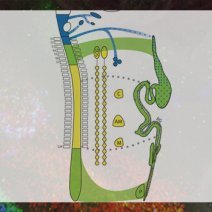Dual origin of enteric neurons in vagal Schwann cell precursors and the sympathetic neural crest
Isabel Espinosa-Medina, Ben Jevans, Franck Boismoreau, Zoubida Chettouh, Hideki Enomoto, Thomas Müller, Carmen Birchmeier, Alan J. Burns, and Jean-François Brunet.
Abstract
Most of the enteric nervous system derives from the “vagal” neural crest, lying at the level of somites 1–7, which invades the digestive tract rostro-caudally from the foregut to the hindgut. Little is known about the initial phase of this colonization, which brings enteric precursors into the foregut. Here we show that the “vagal crest” subsumes two populations of enteric precursors with contrasted origins, initial modes of migration, and destinations. Crest cells adjacent to somites 1 and 2 produce Schwann cell precursors that colonize the vagus nerve, which in turn guides them into the esophagus and stomach. Crest cells adjacent to somites 3–7 belong to the crest streams contributing to sympathetic chains : they migrate ventrally, seed the sympathetic chains, and colonize the entire digestive tract thence. Accordingly, enteric ganglia, like sympathetic ones, are atrophic when deprived of signaling through the tyrosine kinase receptor ErbB3, while half of the esophageal ganglia require, like parasympathetic ones, the nerve-associated form of the ErbB3 ligand, Neuregulin-1. These dependencies might bear relevance to Hirschsprung disease, with which alleles of Neuregulin-1 are associated.
Significance
The enteric nervous system of vertebrates arises mostly from a rostral portion of the neural crest, encapsulated by the term “vagal.” We show that the “vagal crest” is in fact a juxtaposition of two completely different types of cells : Schwann cell precursors associated with the vagus nerve, which provide esophageal neurons, and the rostral-most trunk crest, which also forms sympathetic ganglia and locally overshoots the aorta to colonize most of the gut. Moreover, in line with the known dependency of both Schwann cell precursors and trunk crest on the ErbB3 tyrosine receptor kinase and its ligand Neuregulin1, we discover that the enteric nervous system is also atrophic in ErbB3 mutants, with potential relevance to Hirschsprung disease, a congenital hypoganglionosis.
doi : 10.1073/pnas.1710308114


